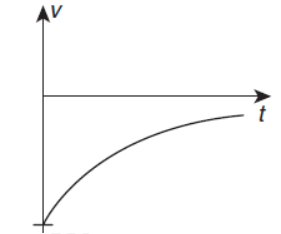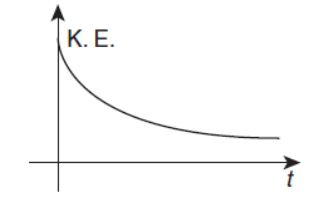Q.
Column I describes some situations in which a small object moves. Column II describes some characteristics of these motions. Match the situations in Column I with the characteristics in Column II:
Column I
Column II
A
The object moves on the x-axis under a conservative force in such a way that its "speed" and "position" satisfy v=c1√c2−x2, where c1, and c2 are positive constants.
P
The object executes a simple harmonic motion.
B
The object moves on the x-axis in such a way that its velocity and its displacement from the origin satisfy v=−kx, where k is a positive constant.
Q
The object does not change its direction.
C
The object is attached to one end of a mass-less spring of a given spring constant. The other end of the spring is attached to the ceiling of an elevator. Initially everything is at rest. The elevator starts going upwards with a constant acceleration a. The motion of the object is observed from the elevator during the period it maintains this acceleration.
R
The kinetic energy of the object keeps on decreasing.
D
The object is projected from the earth's surface vertically upwards with a speed 2√GMe/Re, where Me is the mass of the Earth and Re is the radius of the Earth. Neglect forces from objects other than the Earth.
S
The object can change its direction only once.
| Column I | Column II | ||
|---|---|---|---|
| A | The object moves on the x-axis under a conservative force in such a way that its "speed" and "position" satisfy v=c1√c2−x2, where c1, and c2 are positive constants. | P | The object executes a simple harmonic motion. |
| B | The object moves on the x-axis in such a way that its velocity and its displacement from the origin satisfy v=−kx, where k is a positive constant. | Q | The object does not change its direction. |
| C | The object is attached to one end of a mass-less spring of a given spring constant. The other end of the spring is attached to the ceiling of an elevator. Initially everything is at rest. The elevator starts going upwards with a constant acceleration a. The motion of the object is observed from the elevator during the period it maintains this acceleration. | R | The kinetic energy of the object keeps on decreasing. |
| D | The object is projected from the earth's surface vertically upwards with a speed 2√GMe/Re, where Me is the mass of the Earth and Re is the radius of the Earth. Neglect forces from objects other than the Earth. | S | The object can change its direction only once. |
JEE AdvancedJEE Advanced 2007
Solution:

